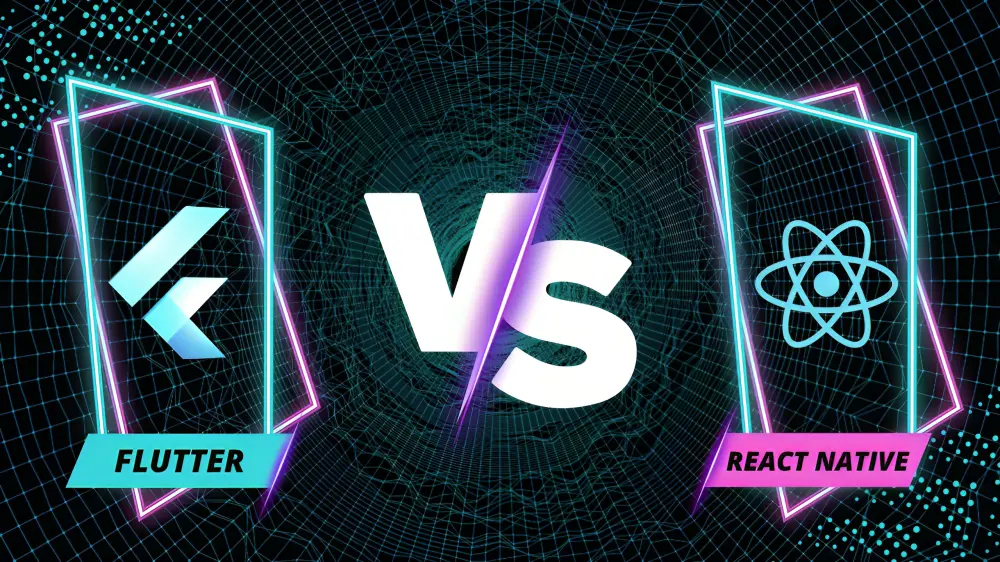As we enter 2024, the ongoing discussion over selecting Flutter vs React Native for mobile app development remains a prominent subject within the developer community. The choice becomes progressively intricate with both frameworks presenting compelling attributes and vibrant communities. Whether your focus lies in achieving smooth cross-platform capabilities or emphasizing a native user experience, comprehending the merits and drawbacks of each framework is pivotal in identifying the most suitable option for your project requirements.
Here’s the full details of Flutter vs React Native
What is React Native?
React Native is a framework for creating user interfaces that combine React with the best aspects of native development. It enables you to create mobile apps solely with JavaScript. You can download these mobile apps from the Apple Store and Google Play Store.
Evolution of React Native
The major mobile operating system providers, Apple and Google, have never collaborated to develop a unified platform for app development. Meta, formerly known as Facebook, has offered a robust solution by addressing the most perplexing challenges encountered by native app developers.
In 2015, Meta introduced the initial stable release of React Native, simplifying the process for developers who could modify the code once and distribute it across various app stores after compilation. Consequently, millions of developers have embraced React Native to swiftly and cost-effectively build applications that deliver unique user experiences.
Since its inception, React Native has undergone numerous updates, continuously enhancing features and addressing critical structural issues identified through feedback and testing. In early 2021, Meta implemented several changes, including support for react-navigation, react-viro, react-native-auth0 auto-linking, and C++ turboModules.
Advantages of React Native
- The React Native team and Meta’s ongoing efforts to enhance the platform’s capabilities through reliable updates and the introduction of more efficient features demonstrate its maturity.
- Mobile app growth has been consistent due to the framework’s inherent understanding of how to market apps on popular platforms.
- The hot and live reloading features allow React Native developers to see their changes in real-time, reducing app loading times and facilitating quick updates.
What is Flutter?
Google created the cross-platform mobile app development framework Flutter. Using a single code base, it provides developers with an easy way to create and launch aesthetically pleasing, natively compiled applications for desktop, web, and mobile (iOS, Android). Now that you are aware of the two frameworks, let’s examine some of their distinctions.
Evolution of Flutter
- When Flutter 2.0 was released in December 2020, it came with several special additions.
- Flutter screens can be integrated into pre-existing Java, Swift, or Objective C apps by developers.
- NestedScrollView allows developers to create scrollable lists inside of other scrollable lists.
- Sliders that adapt to the user’s screen size automatically can be created by developers.
- You don’t need to write extra code to integrate web content into your Flutter project thanks to WebView.
Advantages of Flutter
- Reduced development costs, which increase adaptability and uptake; no additional fees or license requirements
- straightforward implementation using a single codebase to develop desktop, web, and mobile apps
- Programs appear sleek and contemporary because of flutter widgets’ superb material design.
- For automated app testing, a headless testing framework makes it possible to test your app on non-user interface (UI) devices.
- By creating an app in multiple languages, you can reach a global audience thanks to Flutter’s support for internationalization.
History of Flutter and React Native
Introduced by Google in 2017, Flutter has gained significant traction among developers thanks to its exceptional performance, user-friendly interface, and extensive collection of pre-built widgets. Powered by the Dart programming language, Flutter prioritizes simplicity and accessibility for developers. Its hallmark feature, hot reload, enables instantaneous updates to code, fostering rapid iteration and enhancing development efficiency.
In contrast, React Native, crafted by Facebook in 2015, has emerged as a go-to framework for cross-platform mobile app development. Leveraging JavaScript, React Native empowers developers to craft applications compatible with both iOS and Android platforms. Its popularity stems from its ability to deliver a native-like experience to users, despite being developed primarily in JavaScript.
How do Cross-Platform Development Frameworks Work?
With the help of these frameworks, developers can write code only once and have it run on multiple platforms, including Windows, iOS, and Android. This method eliminates the need to write different codes for each platform, saving time and money.
Furthermore, these frameworks use a collection of tools and libraries that abstract away platform differences to function. These libraries let programmers create platform-agnostic code, which means it doesn’t require any changes to run on different platforms.
Flutter vs React Native: In-depth Comparison
- Language: React Native’s need for JavaScript bridging makes it slower than Flutter. Flutter uses Dart because of its object-oriented philosophy, which results in faster compilation and less time spent developing code. However, Dart is not widely used and faces challenges due to its lack of support by many IDEs. Because it incorporates JavaScript, React Native has a larger community of users, which is advantageous for developers who do not have to learn a completely new language. As a result, JavaScript gives React Native the advantage when comparing languages.
- Flutter vs React Native Structure: As far as we are aware, Flux architecture needs JavaScript to run scripts, which is why React Native uses it as a programming bridge. This naturally shortens the time it takes for an app to render, which is a drawback of Flux when compared to Flutter’s BLoC architecture. The BLoC design is simple, effective, and testable. Flutter’s architecture design, in addition to the Dart language, reduces the amount of time needed to familiarize oneself with a project, which is particularly helpful when working under pressure. Finally, Flutter prevails in the “battle” of the structure.
- Flutter vs React Native Documentation: Newer framework Flutter strongly emphasizes comprehensive documentation, thoughtfully crafted resources, and how-to videos. React Native documentation is rarely updated due to its heavy reliance on third-party libraries. Many developers find React Native’s documentation more user-friendly, despite its lackluster quality.
- Device Compatibility: Flutter is the undisputed winner in this instance. iOS 11 and React Native apps are compatible with Flutter apps. For Android, React Native needs Android 6.0 or higher, while Flutter needs Android 4.1 or above.
Conclusion
In the ever-changing world of cross-platform mobile app development, choosing between Flutter and React Native is critical. Each framework offers its own set of advantages, such as React Native’s strong community support or Flutter’s sleek design. Developers must understand these distinctions to make informed decisions that meet current and future project needs.





